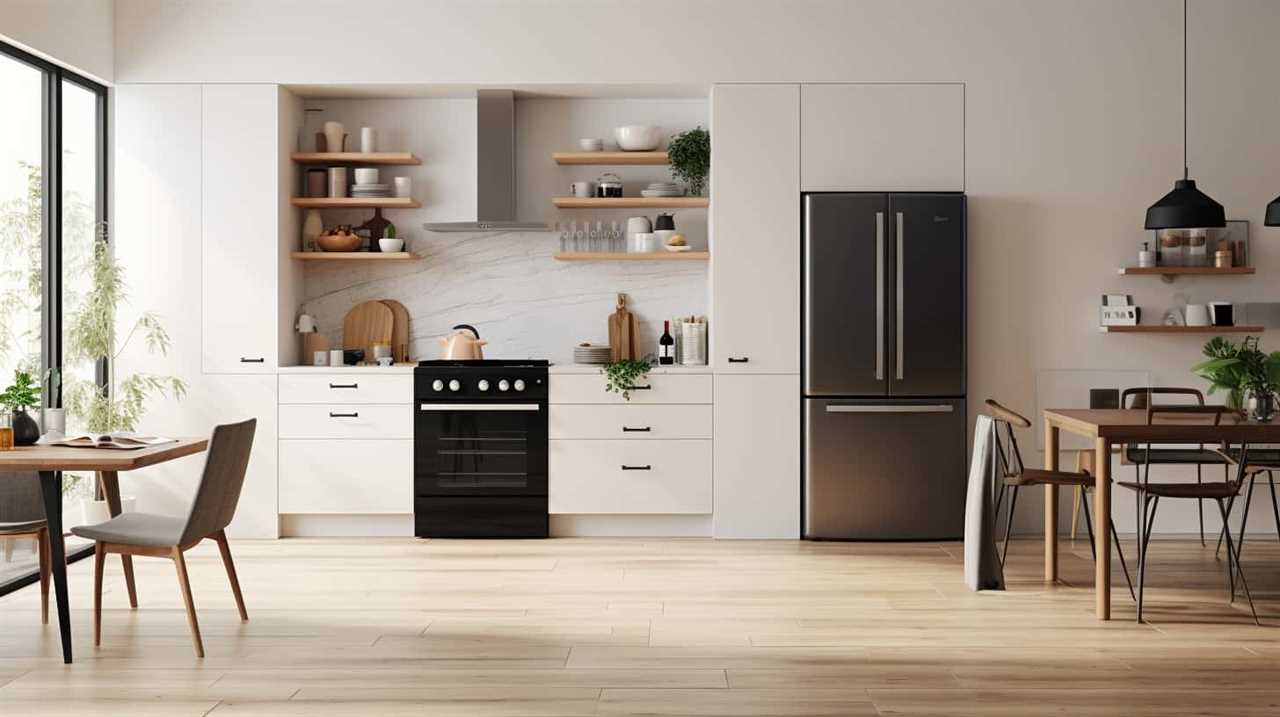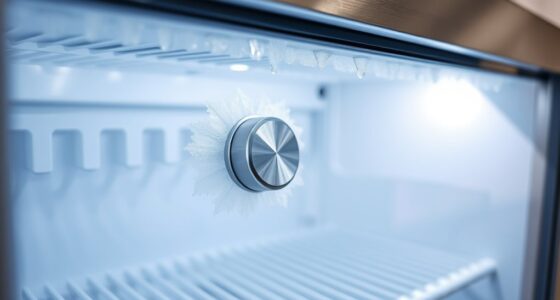Were you aware that household appliances represent about 13% of residential energy usage in the United States?
In our quest for sustainability, energy-efficient smart home appliances have emerged as a game-changer. These innovative devices offer advanced features and functionalities that not only enhance our daily lives but also reduce our carbon footprint.
In this article, we will explore the world of energy-efficient smart home appliances and their significant contribution to creating a sustainable future. From smart lighting solutions that adapt to our needs, to eco-friendly kitchen appliances that minimize waste, and energy monitoring systems that help us manage our consumption, these appliances offer a wealth of possibilities for those seeking mastery in sustainable living.
Join us as we delve into the exciting realm of energy-efficient smart home appliances for sustainability.

Key Takeaways
- Energy-efficient smart home appliances can significantly reduce carbon footprint.
- Sustainable building materials, such as insulation materials and energy-efficient windows, contribute to overall energy efficiency.
- LED bulbs are a key component of smart home lighting solutions, offering energy efficiency and longer lifespan.
- Automated lighting controls, including motion sensors, dimmers, timers, and schedules, optimize energy consumption and reduce waste.
Importance of Energy Efficiency
Energy efficiency plays a crucial role in reducing energy consumption and promoting sustainability in our smart homes. When it comes to constructing energy efficient homes, the choice of sustainable building materials is of utmost importance. These materials not only contribute to the overall energy efficiency of the house but also minimize the environmental impact during construction and throughout the lifespan of the building.
One key aspect of energy efficient home construction is the use of insulation materials that help to maintain a comfortable indoor temperature while reducing the need for excessive heating or cooling. Materials such as cellulose, fiberglass, and spray foam insulation are commonly used to provide effective thermal insulation, preventing heat transfer between the interior and exterior of the house.
In addition to insulation, the selection of energy efficient windows is essential. Windows with low-E coatings and double or triple glazing help to minimize heat loss during the winter and prevent heat gain in the summer. This reduces the reliance on artificial heating and cooling systems, thereby reducing energy consumption.
Furthermore, sustainable building materials like bamboo, recycled steel, and reclaimed wood can be used in various parts of the construction process. These materials have a lower environmental impact compared to traditional building materials, as they require fewer resources and produce less waste.
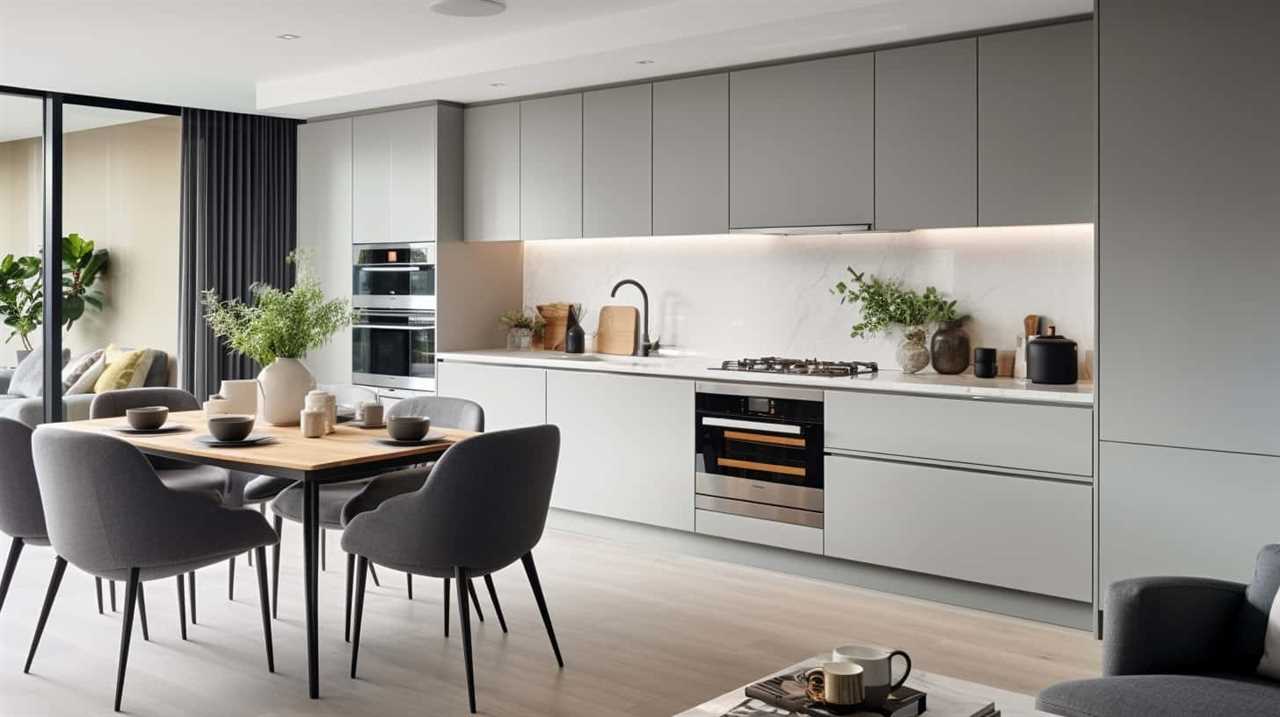
Smart Home Lighting Solutions
When it comes to smart home lighting solutions, one of the key points to consider is the difference between LED and traditional bulbs. LED bulbs are known for their energy efficiency and long lifespan, making them a popular choice for smart homes.
Additionally, automated lighting controls play a crucial role in optimizing energy usage by allowing users to set schedules, adjust brightness, and even control lights remotely. These solutions not only provide convenience but also offer significant energy savings benefits for a more sustainable home.
LED Vs Traditional Bulbs
Comparing LED and traditional bulbs, we found that LED bulbs offer more energy-efficient and sustainable lighting solutions for smart homes. Here are four reasons why LED bulbs are superior to incandescent bulbs when it comes to energy-efficient home lighting:
- Energy Efficiency: LED bulbs consume significantly less energy than incandescent bulbs, resulting in lower electricity bills and reduced carbon footprint.
- Longer Lifespan: LED bulbs have a much longer lifespan compared to incandescent bulbs, reducing the frequency of replacement and waste generation.
- Environmental Impact: LED bulbs don’t contain harmful substances like mercury, making them safer for the environment and easier to dispose of.
- Smart Home Integration: LED bulbs can be seamlessly integrated into smart home systems, allowing users to control and customize their lighting to maximize energy efficiency and create the desired ambiance.
Automated Lighting Controls
How can we integrate automated lighting controls into our smart homes for enhanced energy efficiency and convenience?

Lighting automation is an essential feature of a smart home, allowing users to control their lights remotely and automatically based on predefined settings or triggers. By implementing automated lighting controls, homeowners can optimize energy consumption by ensuring that lights are only on when needed. This not only reduces electricity bills but also contributes to sustainability efforts by minimizing unnecessary energy use.
Smart home lighting solutions offer various features such as motion sensors, timers, and dimmers, allowing users to customize their lighting preferences and create personalized lighting schedules. With the ability to adjust lighting levels and turn lights on or off remotely, automated lighting controls provide convenience and flexibility while promoting energy efficiency in our smart homes.
Energy Savings Benefits
By implementing automated lighting controls, we can experience significant energy savings and contribute to sustainability efforts in our smart homes. Here are four energy saving tips to consider when it comes to smart home lighting solutions:
- Use LED bulbs: LED bulbs are highly energy efficient and last longer than traditional incandescent bulbs, reducing the need for frequent replacements.
- Motion sensors: Installing motion sensors in rooms can automatically turn off lights when no one is present, reducing energy waste.
- Dimmers: Dimmers allow you to adjust the brightness of your lights, enabling you to use just the right amount of light needed, thereby saving energy.
- Timers and schedules: Setting timers and schedules for your lights ensures they’re only on when needed, eliminating unnecessary energy consumption.
Implementing these energy saving tips not only helps reduce your environmental impact but also lowers your energy bills.
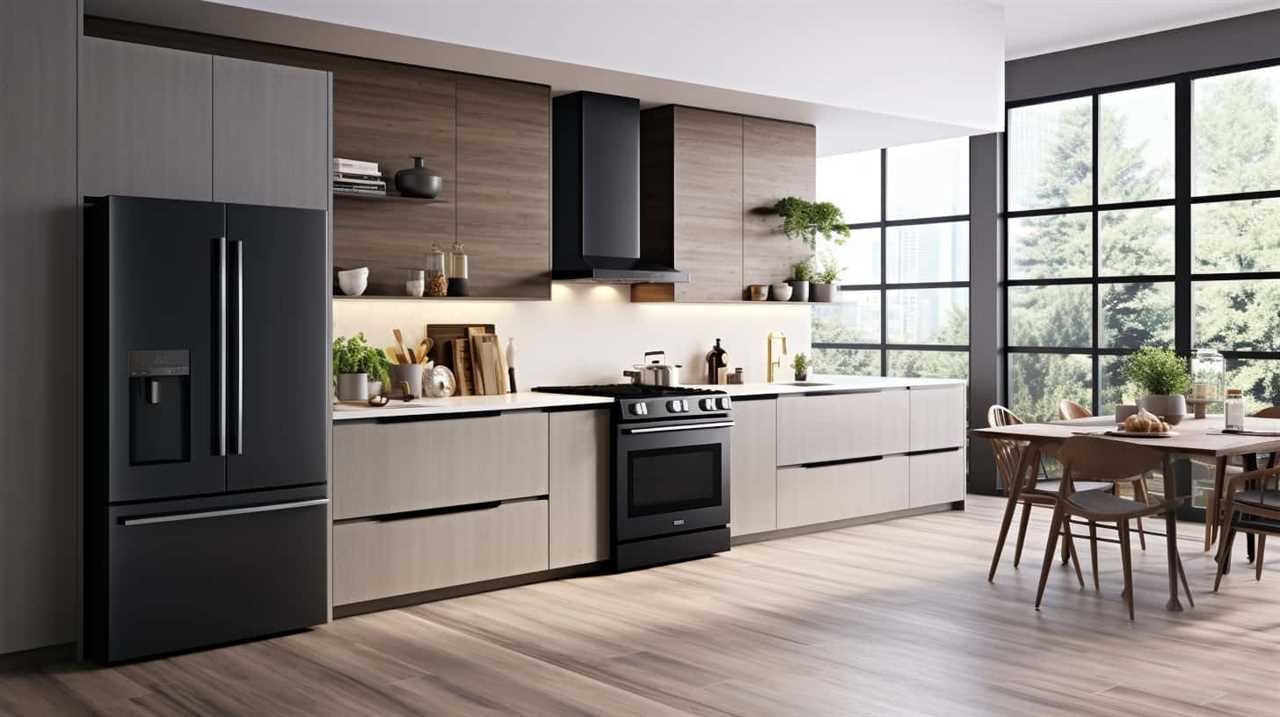
Now, let’s move on to discussing energy-efficient cooling and heating systems.
Energy-Efficient Cooling and Heating Systems
When it comes to energy-efficient cooling and heating systems, there are two key points to consider: cost and efficiency, and eco-friendly cooling options.
We need to focus on finding systems that not only save us money on our energy bills but also have a positive impact on the environment.
Cost and Efficiency
To what extent can energy-efficient cooling and heating systems contribute to cost savings and increased efficiency in smart homes?

Energy-efficient cooling and heating systems play a crucial role in reducing energy consumption and lowering utility bills. Here are four ways these systems can improve cost savings and efficiency in smart homes:
- Reduced energy consumption: Energy-efficient cooling and heating systems are designed to use less energy, leading to significant cost savings over time.
- Smart thermostats: These advanced devices allow homeowners to set temperature schedules and adjust settings remotely, optimizing energy usage and reducing wastage.
- Zoning capabilities: Energy-efficient systems with zoning capabilities can cool or heat specific areas of the home, avoiding unnecessary energy usage in unoccupied spaces.
- Proper maintenance: Regular maintenance of cooling and heating systems ensures optimal performance, prolonging their lifespan and avoiding costly repairs.
By implementing energy-efficient cooling and heating systems, homeowners can save money and improve the overall efficiency of their smart homes.
Now, let’s explore eco-friendly cooling options.
Eco-Friendly Cooling Options
Implementing energy-efficient cooling and heating systems is essential for achieving sustainability in our smart homes, ensuring optimal comfort while minimizing environmental impact.

When it comes to eco-friendly cooling options, solar powered fans and natural ventilation options are worth considering. Solar powered fans utilize the sun’s energy to cool the air, reducing the need for traditional electricity consumption. These fans are an energy-efficient and cost-effective solution, as they require minimal maintenance and have a long lifespan.
Additionally, natural ventilation options, such as strategically placed windows and vents, can help circulate fresh air throughout the home, reducing the reliance on air conditioning systems.
By incorporating these eco-friendly cooling options, we can create a more sustainable and energy-efficient living environment.
Now, let’s explore the next section about eco-friendly smart kitchen appliances.

Eco-Friendly Smart Kitchen Appliances
In our search for energy-efficient smart home appliances, we’ve found that eco-friendly smart kitchen appliances play a crucial role in promoting sustainability. The kitchen is often the heart of the home, and by making it more eco-friendly, we can reduce our environmental impact while still enjoying the convenience and functionality of modern technology.
Here are four reasons why eco-friendly smart kitchen appliances are a must-have for any sustainable home:
- Sustainable kitchenware: Eco-friendly smart kitchen appliances are designed to work seamlessly with sustainable kitchenware, such as reusable containers and utensils made from renewable materials. By using these products, we can reduce waste and minimize our carbon footprint.
- Energy-saving cooking techniques: Smart kitchen appliances are equipped with advanced features that optimize energy usage, such as precise temperature control and efficient cooking modes. By utilizing these techniques, we can save energy and reduce our overall energy consumption.
- Smart resource management: Eco-friendly smart kitchen appliances have built-in sensors and automation capabilities that help us monitor and manage our resources more effectively. For example, smart refrigerators can optimize cooling settings based on usage patterns, reducing energy waste.
- Reduced water consumption: Many eco-friendly smart kitchen appliances are designed to minimize water usage. Smart dishwashers, for instance, can adjust water levels based on load size, saving both water and energy.
By investing in eco-friendly smart kitchen appliances, we can create a sustainable kitchen environment that promotes energy efficiency and reduces our environmental impact.
In the next section, we’ll explore the importance of smart home energy monitoring and management in achieving a truly sustainable household.
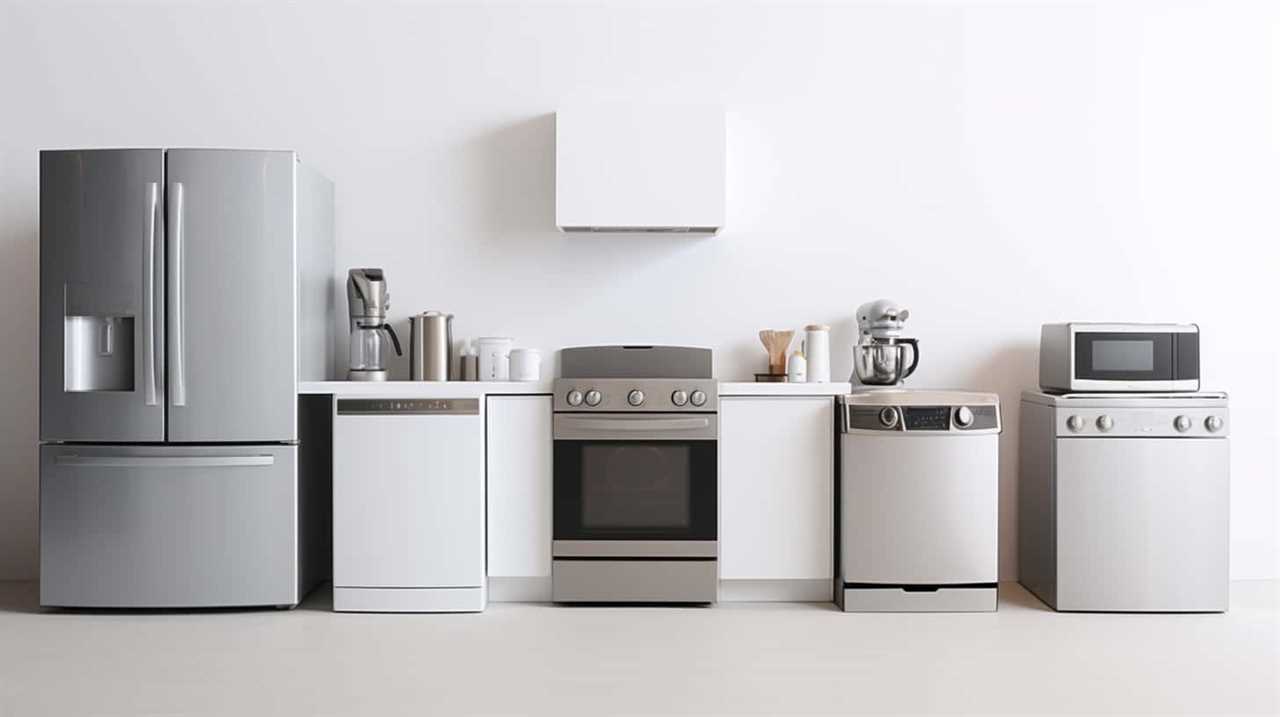
Smart Home Energy Monitoring and Management
Our approach to achieving a sustainable household includes actively monitoring and managing our home’s energy usage. Smart home energy monitoring and management systems play a crucial role in enabling us to track and control our energy consumption effectively. These systems utilize advanced technologies to provide real-time data on our energy usage, allowing us to identify areas of high energy consumption and make informed decisions to reduce waste.
One of the key components of smart home energy monitoring is the use of energy usage tracking devices. These devices can be installed on electrical appliances and outlets to measure their energy consumption. By monitoring the energy usage of individual devices, we can identify energy-hungry appliances and take measures to reduce their usage or replace them with more energy-efficient alternatives.
In addition to energy monitoring, smart home energy management also involves the use of energy-saving power strips. These power strips are equipped with features such as timers, motion sensors, and power surge protection. They enable us to control the power supply to multiple devices, allowing us to turn them off when not in use or during periods of low energy demand.
Efficient Laundry Solutions for Sustainability
Let’s explore efficient laundry solutions for sustainability. When it comes to sustainable washing machines and water-saving laundry solutions, there are several options available. Here are four compelling reasons why investing in these technologies isn’t only environmentally friendly but also economically beneficial:
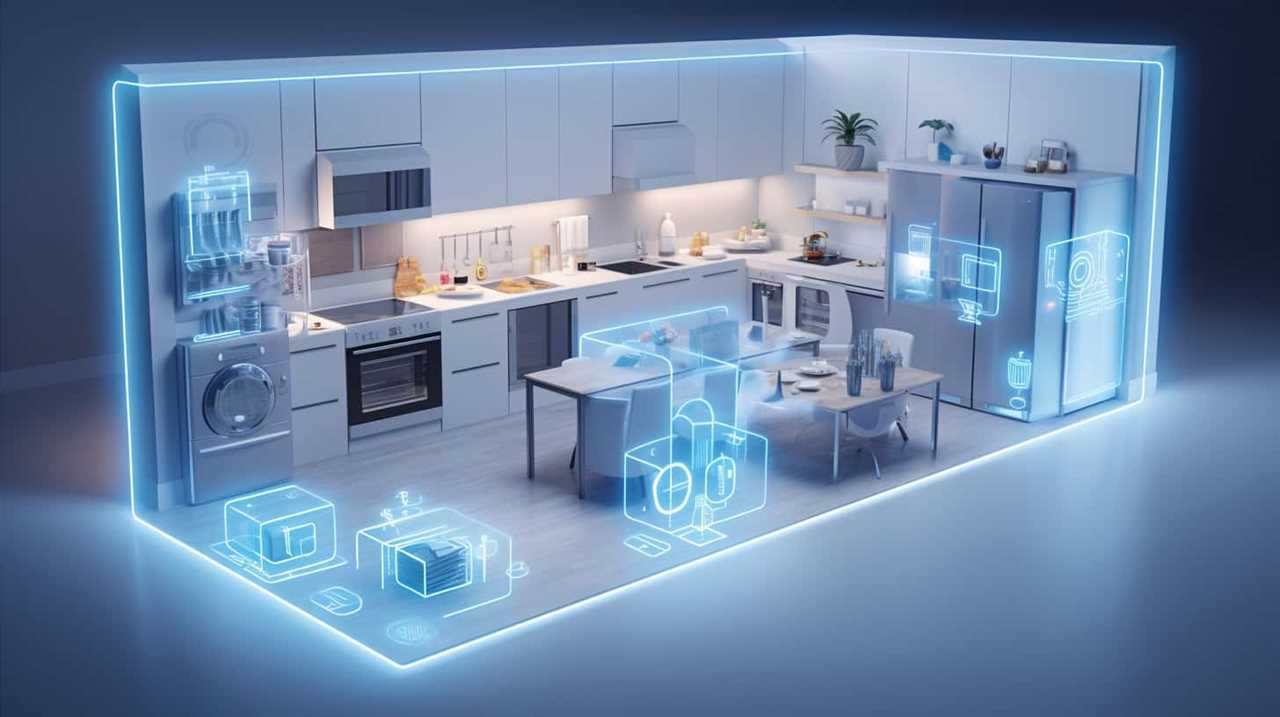
- Reduced water consumption: Sustainable washing machines are designed to use less water per load, significantly reducing water consumption. This not only conserves a precious resource but also lowers your water bill.
- Energy efficiency: These machines are equipped with advanced technologies that optimize energy usage, leading to lower energy consumption and reduced carbon emissions. By choosing an energy-efficient model, you can contribute to a greener future.
- Smart features: Many sustainable washing machines come with smart features such as load sensors and automatic detergent dispensers. These technologies ensure that you use the right amount of water and detergent for each load, minimizing waste and maximizing efficiency.
- Long-term cost savings: Although sustainable washing machines may have a higher upfront cost, they offer long-term savings through reduced water and energy consumption. Over time, these savings can offset the initial investment, making them a financially viable choice.
Smart Home Entertainment and Energy Conservation
Exploring smart home entertainment options can contribute to energy conservation and sustainability. Smart home audio systems and energy-efficient home theaters are key components in achieving this goal.
Smart home audio systems, such as wireless speakers and soundbars, offer energy-saving features that can help reduce power consumption. These systems often come with built-in sensors that can detect when no audio is being played and automatically enter a power-saving mode. Additionally, they can be integrated with smart home automation systems, allowing users to control and schedule their audio devices for optimal energy efficiency.
Energy-efficient home theaters are designed to minimize energy usage without compromising on the quality of the entertainment experience. These systems typically include energy-saving features like LED lighting, low-power consumption projectors, and efficient audio amplifiers. Additionally, they can be programmed to automatically power down when not in use, saving energy and reducing standby power.
Frequently Asked Questions
What Are Some Common Energy-Efficient Features Found in Smart Home Appliances?
Some common energy-efficient features found in smart home appliances include:
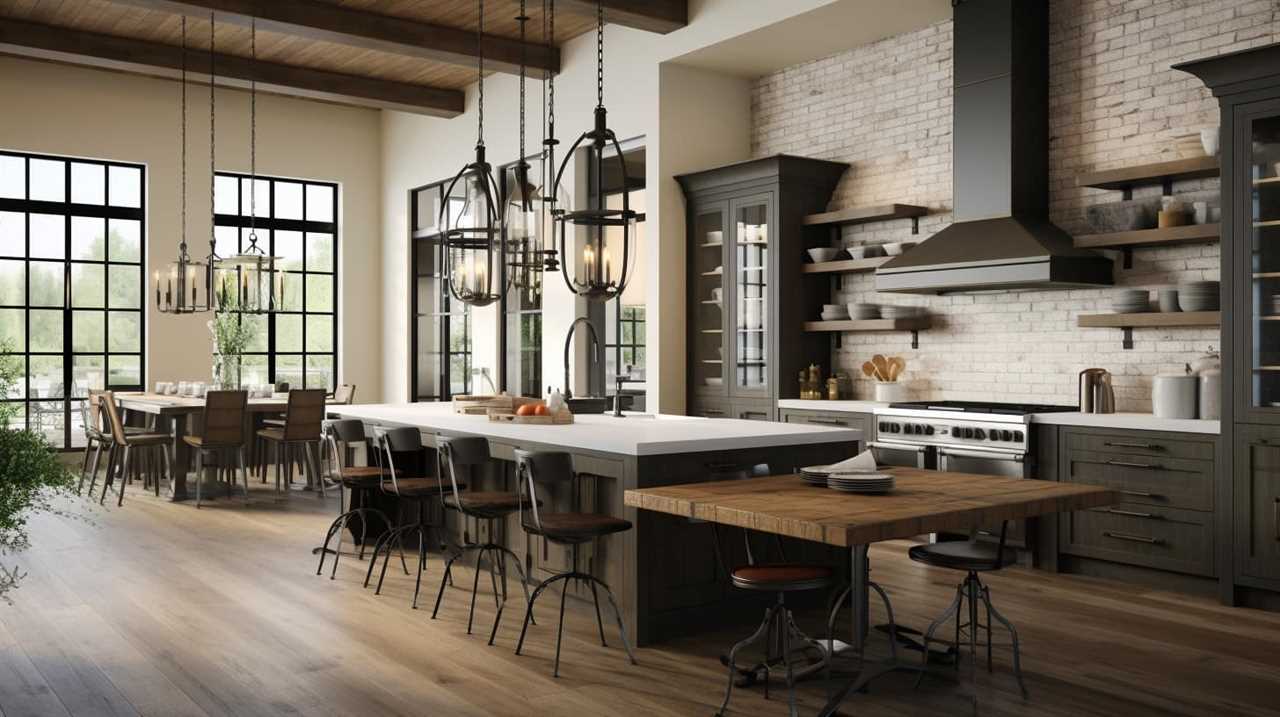
- Energy-saving technology
- Energy-efficient lighting
These features are designed to minimize energy consumption and reduce the environmental impact of using these appliances. By integrating advanced technology and efficient lighting systems, smart home appliances can optimize energy usage and contribute to sustainability efforts.
These features make smart home appliances an excellent choice for individuals who are committed to reducing their energy consumption and living a more eco-friendly lifestyle.
How Do Energy-Efficient Smart Home Appliances Contribute to Sustainability?
Energy-efficient smart home appliances play a vital role in reducing our carbon footprint and promoting sustainability. By using advanced technologies and optimizing resource consumption, these appliances minimize energy wastage and decrease greenhouse gas emissions.
Additionally, they offer long-term cost savings through reduced energy bills. Embracing energy-efficient smart home appliances not only benefits the environment but also empowers us to make responsible choices for a more sustainable future.
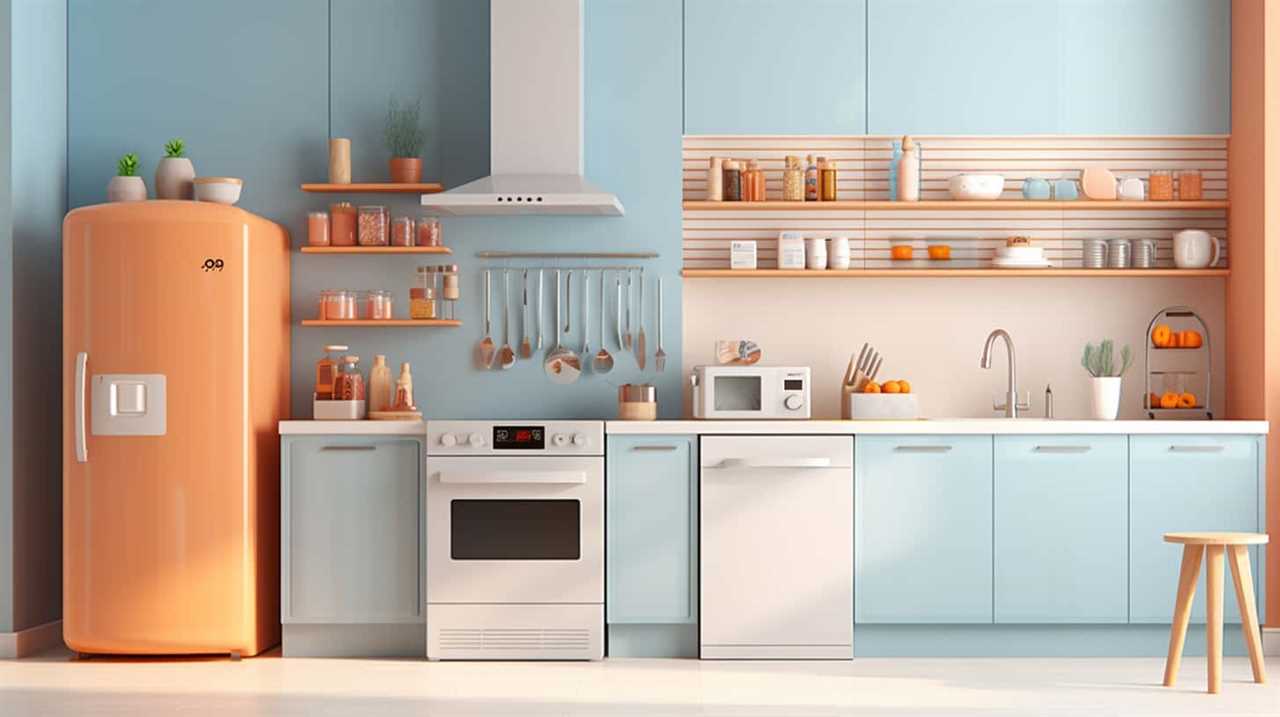
What Are Some Benefits of Using Energy-Efficient Cooling and Heating Systems in a Smart Home?
Using energy-efficient cooling and heating systems in a smart home offers numerous benefits. These systems help reduce energy consumption and lower utility bills, while also minimizing our carbon footprint. They provide precise temperature control and can be easily programmed to adjust settings based on occupancy patterns.
Additionally, energy-efficient smart home appliances play a crucial role in promoting sustainability by conserving resources and promoting a greener lifestyle. Embracing these technologies is essential for a more sustainable and energy-conscious future.
How Do Eco-Friendly Smart Kitchen Appliances Help Reduce Energy Consumption?
Eco-friendly smart kitchen appliances, equipped with energy-saving smart technology, play a vital role in reducing energy consumption. By utilizing advanced features such as energy-efficient modes, automatic shut-off, and optimized power usage, these appliances ensure minimal energy wastage.
Smart refrigerators, ovens, and dishwashers are designed to operate efficiently, reducing the overall energy demand of a household. By incorporating eco-friendly kitchen appliances into our homes, we can contribute to sustainability efforts and enjoy the benefits of reduced energy consumption.
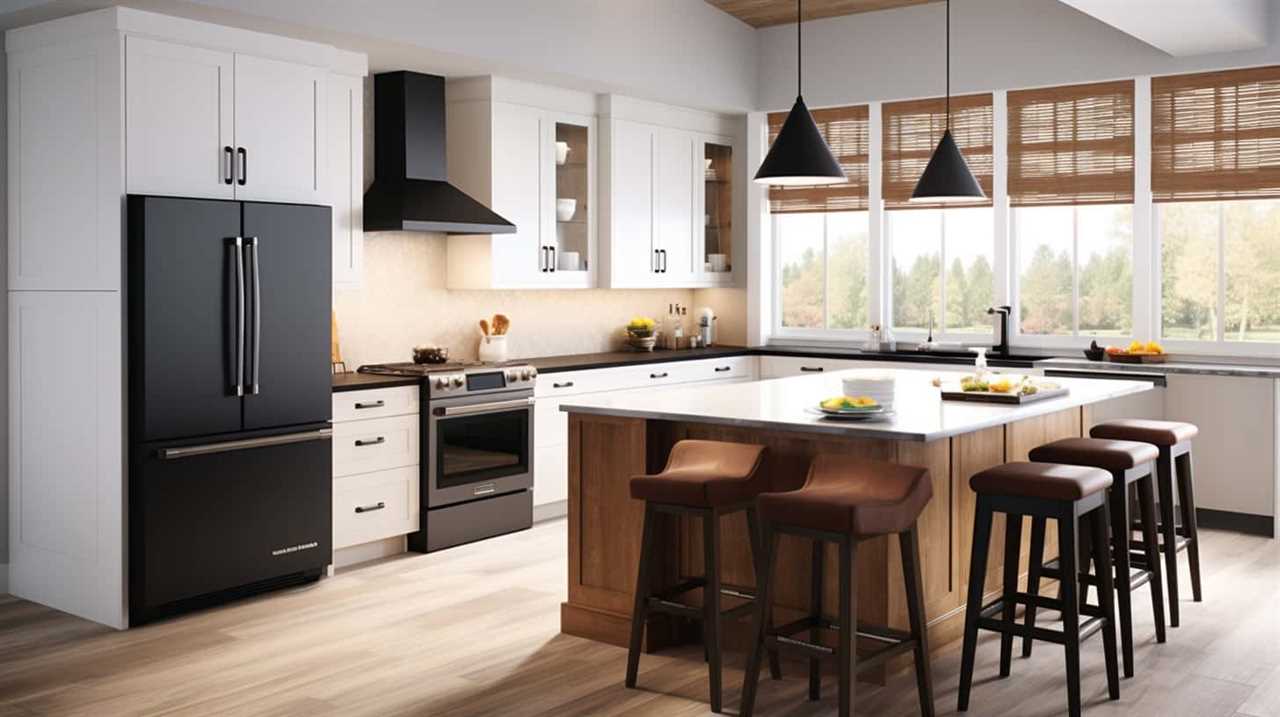
What Are the Advantages of Having a Smart Home Energy Monitoring and Management System?
Having a smart home energy monitoring and management system offers numerous advantages.
Real-time energy monitoring allows us to track and analyze our energy usage, helping us identify areas where we can reduce consumption and save costs.
Additionally, integrating smart home appliances with renewable energy sources enables us to optimize our energy usage and reduce reliance on non-renewable resources.
This system empowers us to make informed decisions about our energy consumption, leading to a more sustainable and cost-effective lifestyle.

Conclusion
In conclusion, energy-efficient smart home appliances play a crucial role in promoting sustainability.
Did you know that by replacing old appliances with energy-efficient ones, households can save up to 30% on their energy bills?
This statistic highlights the significant impact that smart appliances can have on both the environment and our wallets.
By embracing these technologies, we can create a more sustainable future while enjoying the benefits of a smart and efficient home.
